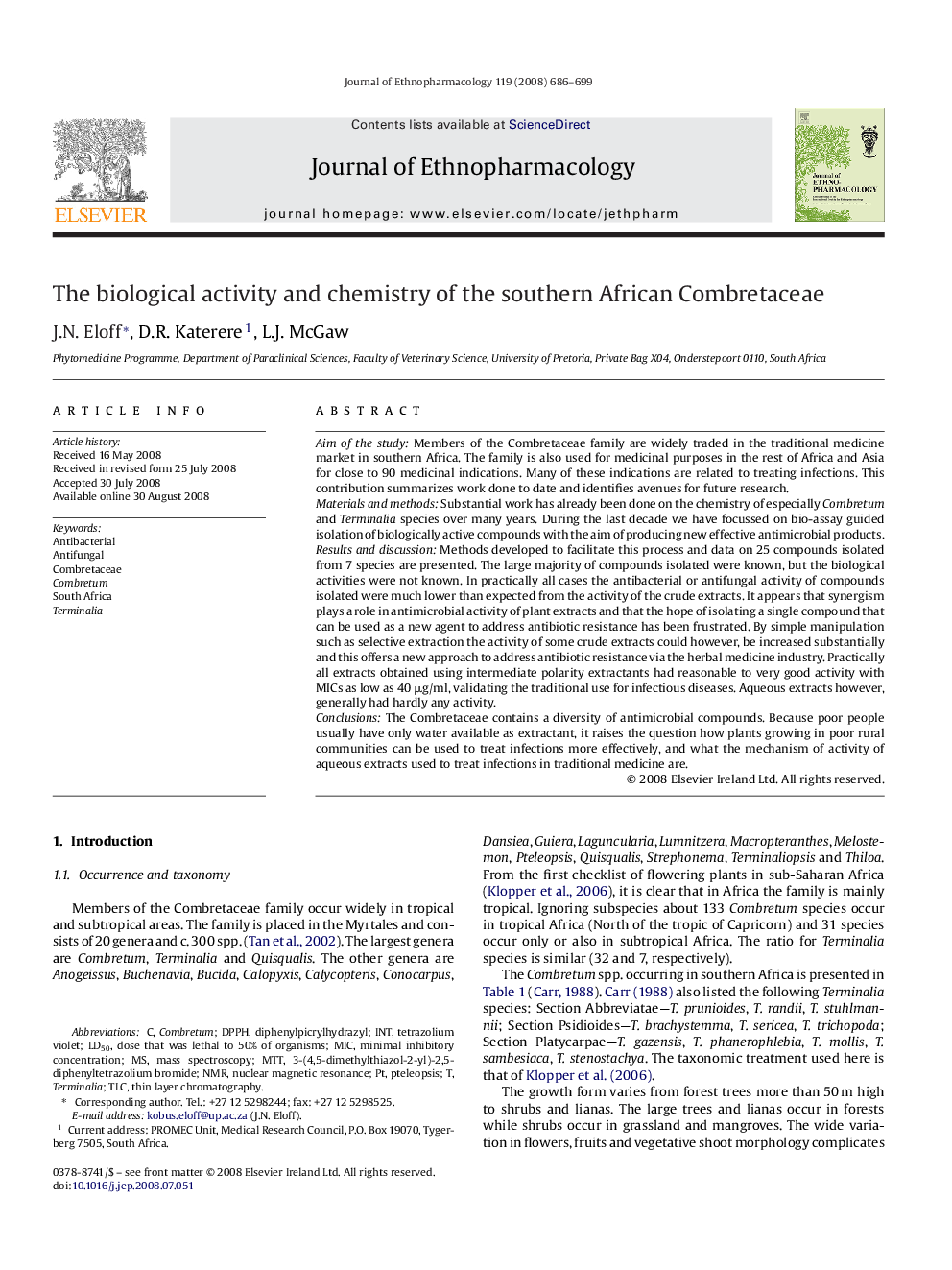| کد مقاله | کد نشریه | سال انتشار | مقاله انگلیسی | نسخه تمام متن |
|---|---|---|---|---|
| 2547635 | 1124063 | 2008 | 14 صفحه PDF | دانلود رایگان |

Aim of the studyMembers of the Combretaceae family are widely traded in the traditional medicine market in southern Africa. The family is also used for medicinal purposes in the rest of Africa and Asia for close to 90 medicinal indications. Many of these indications are related to treating infections. This contribution summarizes work done to date and identifies avenues for future research.Materials and methodsSubstantial work has already been done on the chemistry of especially Combretum and Terminalia species over many years. During the last decade we have focussed on bio-assay guided isolation of biologically active compounds with the aim of producing new effective antimicrobial products.Results and discussionMethods developed to facilitate this process and data on 25 compounds isolated from 7 species are presented. The large majority of compounds isolated were known, but the biological activities were not known. In practically all cases the antibacterial or antifungal activity of compounds isolated were much lower than expected from the activity of the crude extracts. It appears that synergism plays a role in antimicrobial activity of plant extracts and that the hope of isolating a single compound that can be used as a new agent to address antibiotic resistance has been frustrated. By simple manipulation such as selective extraction the activity of some crude extracts could however, be increased substantially and this offers a new approach to address antibiotic resistance via the herbal medicine industry. Practically all extracts obtained using intermediate polarity extractants had reasonable to very good activity with MICs as low as 40 μg/ml, validating the traditional use for infectious diseases. Aqueous extracts however, generally had hardly any activity.ConclusionsThe Combretaceae contains a diversity of antimicrobial compounds. Because poor people usually have only water available as extractant, it raises the question how plants growing in poor rural communities can be used to treat infections more effectively, and what the mechanism of activity of aqueous extracts used to treat infections in traditional medicine are.
Journal: Journal of Ethnopharmacology - Volume 119, Issue 3, 28 October 2008, Pages 686–699